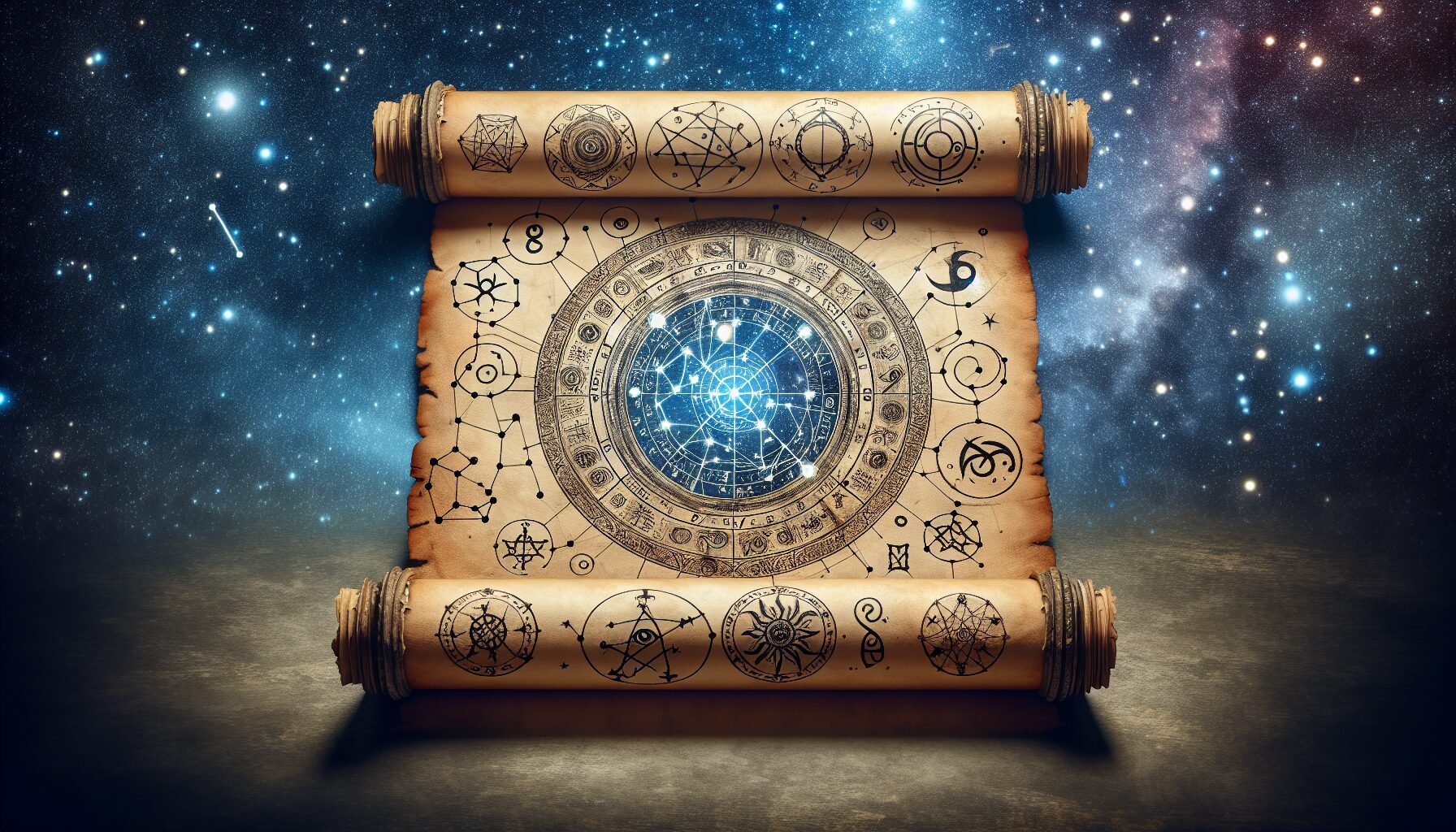Time-Scribed Scrolls: Archetypes Written in the Stars
For millennia, humans have looked to the stars for guidance, inspiration, and understanding of the world and themselves. The night sky, with its twinkling tapestry of celestial bodies, has served as an eternal canvas where humanity has projected myths, hopes, and cosmic archetypes. These heavenly symbols become time-scribed scrolls, filled with timeless wisdom that speaks to both personal and collective unconsciousness.
The Origins of Celestial Archetypes
Celestial archetypes originate from a blend of astrology, mythology, and astronomy. Ancient civilizations, from the Babylonians and Egyptians to the Greeks and Chinese, each saw the cosmos as a series of narratives that explained human traits and events. These cosmic symbols were not just stories but served as guiding principles or archetypes.
- Babylonian Zodiac: The Babylonians were among the first to map the stars into what we know as the zodiac. This ancient system relies on twelve divisions of the sky, each associated with specific qualities and myths.
- Greek Influence: The Greeks further enshrined these celestial symbols, linking gods and legendary heroes to the stars. Their tales of Hercules, Aries, and others still resonate, illustrating human virtues and flaws.
- Chinese Astronomy: In the East, the Chinese developed their own celestial system, where the animals of the zodiac embody qualities such as wisdom, courage, and perseverance.
“Astronomy compels the soul to look upwards and leads us from this world to another.” – Plato
Psychological Insights: Jung and Universal Archetypes
Carl Jung, a seminal figure in psychology, introduced the concept of the collective unconscious—a part of the unconscious mind shared by all human beings, containing memories and images of common experiences. Jung described these shared motifs as archetypes: symbols deeply embedded in our collective psyche.
Jung’s work bridges the understanding of celestial archetypes as more than just ancient stories—they are integral to understanding human behavior and consciousness. He believed that these archetypes are manifested in dreams, myths, and legends, pointing out that these symbols are expressions of our inner realities and the broader human experience.
The Zodiac and Personality
The twelve signs of the zodiac are perhaps the most recognized celestial archetypes today. Each sign corresponds to specific personality traits that, like mythological characters, embody different facets of the human experience:
- Aries: The warrior spirit, symbolizing courage and initiative.
- Taurus: Represents stability, reliability, and a love for beauty.
- Gemini: The twins, denoting duality, communication, and adaptability.
- Cancer: The nurturer, embodying emotion, intuition, and protection.
- Leo: The leader, with qualities of creativity, warmth, and valor.
- Virgo: Associated with diligence, detail, and service.
- Libra: The scales, signifying balance, harmony, and justice.
- Scorpio: The transformative force, with depth, passion, and mystery.
- Sagittarius: The seeker, adventurous, optimistic, and philosophical.
- Capricorn: The strategist, symbolizing ambition, discipline, and perseverance.
- Aquarius: The innovator, representing idealism, originality, and reform.
- Pisces: The dreamer, embodying empathy, healing, and imagination.
Myth and Meaning in the Stars
Human cultures have always bred stories to explain the celestial movements, ascribing deities and legends to the movements of heavenly bodies. Consider the mythos of Orion, the mighty hunter from Greek mythology, whose constellation tells a story of strength, pride, and eventual humility. His tale serves as a reminder of human limitations and the beauty of the journey, regardless of the outcome.
Constellations such as the Pleiades have been revered across cultures, from the ancient Greeks to the Indigenous Australians, each interpreting these stellar patterns in ways that reflect their worldview.
The Modern Resonance of Celestial Archetypes
In contemporary society, these ancient symbols continue to provide comfort and reflection, even for those who no longer see them as divinities but rather as metaphoric guides. Astrology remains a popular discipline, not solely for predicting the future but as a tool for introspection and understanding.
The movement of celestial bodies is said to align with human experiences, offering a celestial backdrop to personal growth and change. In astrology, the concept of transits describes how current planetary movements interact with an individual’s birth chart, illuminating patterns, challenges, and opportunities.
“It is not in the stars to hold our destiny but in ourselves.” – William Shakespeare
Embracing the Cosmic Journey
The sky continues to act as a mirror reflecting our hopes, dreams, and fears. As we embrace this deep connection with the cosmos, we can see these constellations and celestial bodies as reminders of our interconnectivity with the universe and with each other. Whether used for entertainment, introspection, or spiritual guidance, the stories written in the stars offer an opportunity to explore the depths of our psyche.
The celestial archetypes are more than ancient symbols—they are signposts on our journey of understanding, offering wisdom and insight written in the stars. They remind us of our shared humanity and the timeless stories that bridge the gaps between past and present, earth and sky.

Comments